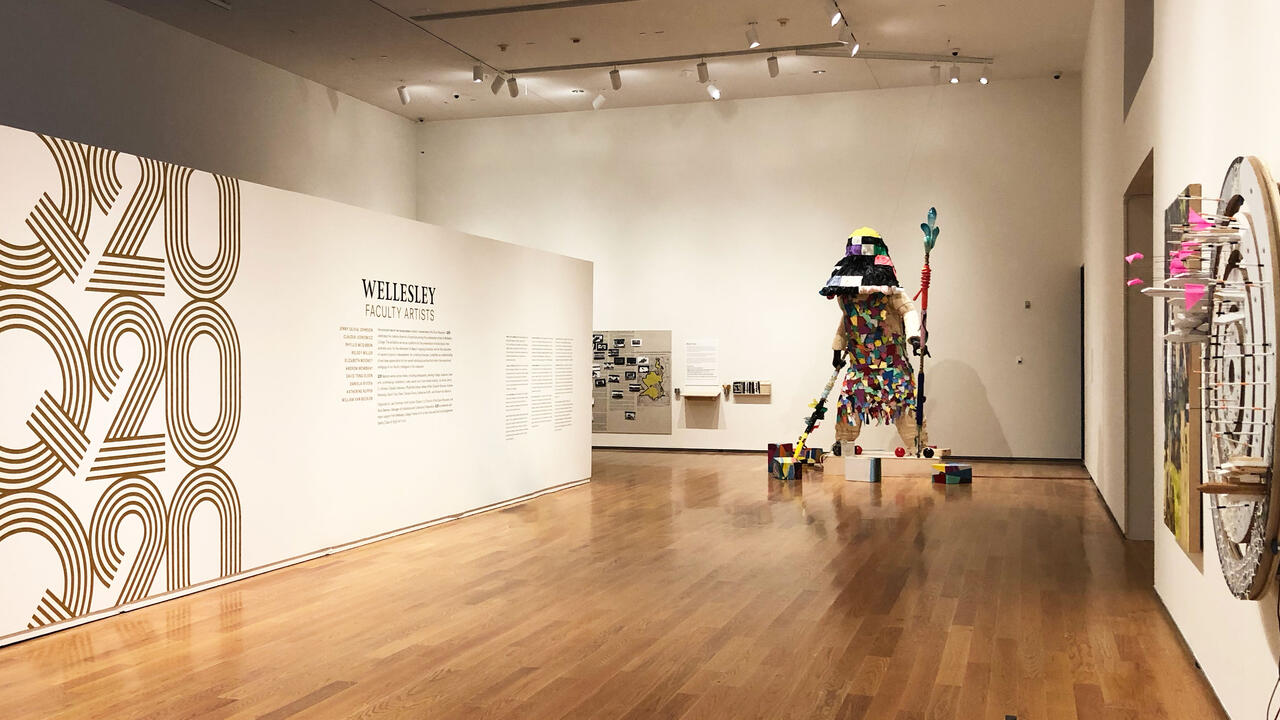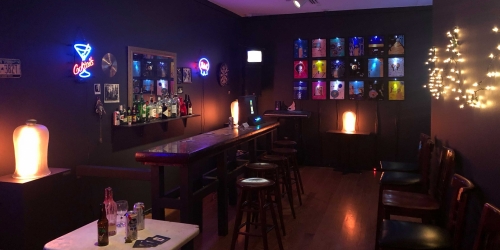New Davis Exhibit Showcases Works by Wellesley’s Faculty Artists

The hulking figure of Survival Robot, a 12-foot-tall sculpture by David Teng Olsen, associate professor of art at Wellesley, towers over visitors to Q20, a new exhibition in the Davis Museum that features the work of 10 faculty members. Inspired in part by the Terracotta Army of the first emperor of China, the sculpture took two years to complete.
The faculty exhibition, organized by Lisa Fischman, Ruth Gordon Shapiro ’37 Director of the Davis Museum, is staged every five years; this year, the artists worked with a wide variety of media including photography, painting, collage, video, and sound.
“There is a little bit of an experimental edge,” said Fischman. “Something about the experience of working together and working with students on a campus really encourages faculty artists to think more broadly about their practice.”
Olsen’s sculpture is made of recycled materials such as wood, hand-blown glass, and plastic. Inside it are six cryptocurrency mining machines. Just as Emperor Qin Shi Huang hoped his terracotta soldiers would protect him in the afterlife, “I am doing everything I can to prepare for the unknown future, after I am long gone,” said Olsen. “It is my goal to create art as a metaphor for the survival of individuals, culture, and family.”
In her installation DIVE (Lucy’s Last Dance), Jenny Olivia Johnson, associate professor of music, has recreated a typical 1990s “dive bar” she remembers from her college days in New York. It features stools and rickety tables, framed posters, flashing lights, and a dart board. A screen hanging from the ceiling in a corner shows a video of a dancer performing on a stage. The After Time, an opera Johnson composed over a 19-year period, plays on the jukebox. Central to this exhibit is the character Lucy, to whom the opera is dedicated.
 Lucy is a young dancer at a women’s college who dies mysteriously, Johnson said. Two women who knew her come together after her death to search for answers.
Lucy is a young dancer at a women’s college who dies mysteriously, Johnson said. Two women who knew her come together after her death to search for answers.
“I developed this exhibit from my experiences in New York City,” said Johnson. “Lucy was modeled on my friend who was an incredibly talented artist who harbored a number of secret emotional struggles. The last place Lucy was seen by friends was a dive bar like this.”
Q20, which also includes work by faculty members Claudia Joskowicz, Phyllis McGibbon, Kelsey Miller, Elizabeth Mooney, Andrew Mowbray, Daniela Rivera, Katherine Ruffin, and William Van Beckum, will be on view through June 7.
Photo: David Teng Olsen’s Survival Robot, a 12-foot-tall sculpture inspired in part by the Terracotta Army of the first emperor of China, took two years to complete.
Photo (inset): Jenny Olivia Johnson’s DIVE (Lucy’s Last Dance) is modeled after a typical 1990s “dive bar” in New York City.



